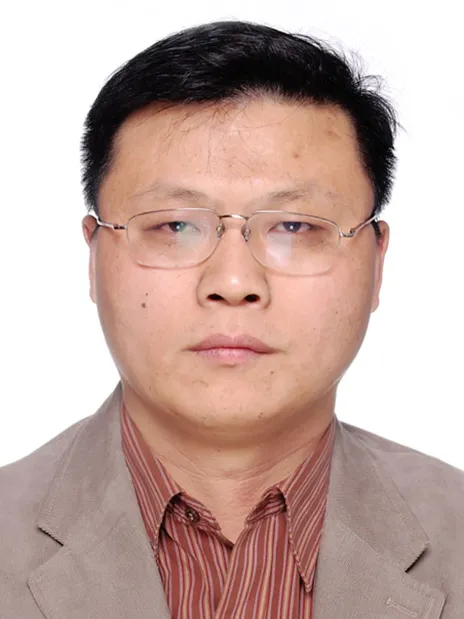Industrial Chemistry and Materials
Find inspiring progress in industrial chemistry and materials in this journal.
Editor-in-Chief: Suojiang Zhang
Open Access: Gold

Backed by our unique partnership with the Institute of Process Engineering, Chinese Academy of Sciences (CAS), we provide a global platform to advance the application of science and technology.
The global editorial and advisory board members are valued experts in the community. With their support, rigorous editorial practices and dissemination ensure your research is accessible and discoverable on a global scale. By bringing researchers, engineers, and policymakers into one place, research is inspired, challenges are solved and the applications of science and technology are accelerated.
ISSN: 2755-2500 (Online)
Indexed in: Web of Science: Emerging Sources Citation Index, EI Compendex, IET INSPEC, Directory of Open Access Journals (DOAJ), CAS
Journal Impact factor
11.9 (2024)
First decision time (all)
4 days
First decision time (peer reviewed)
20 days
Scope
Industrial Chemistry & Materials (ICM) publishes significant innovative research and major technological breakthroughs in all aspects of industrial chemistry and materials, focusing on the important innovation of the low-carbon chemical industry, energy and functional materials.
Chemical industry and materials science is entering a new green, high-value and intelligent era. ICM features application-driven chemistry and functional materials innovation. We hope this journal will be the premier home for papers related to industrial chemistry and materials, with a vision of stimulating inspiration, solving problems, and accelerating the application of science and technology.
Professor Suojiang Zhang, Editor-in-Chief, Industrial Chemistry & Materials
Information for authors
Want to publish in this journal? Our author guidelines explain how to prepare and submit your article and provide useful information on the review and publication process including transfers, revisions and any article processing charges (APCs) that may apply.
The Institute of Process Engineering of CAS is covering all article processing charges until 31 December 2028, so you can publish in this journal for free.
Meet the team










Santiago Aparicio
University of Burgos
Jong Wook Bae
Sungkyunkwan University
Mark Biggs
Heriot-Watt University
Hongbin Cao
Institute of Process Engineering
Liwei Chen
Shanghai Jiao Tong University
Weihua Chen
Zhengzhou University
Walid Daoud
City University of Hong Kong
Shoubhik Das
University of Antwerp
Xianfeng Fan
University of Edinburgh
Mara G. Freire
University of Aveiro
Feng Gao
Linköping University
Yanlong Gu
Huazhong University of Science and Technology
Ruilan Guo
University of Notre Dame
Yu Han
King Abdullah University of Science and Technology
Niklas Hedin
Stockholm University
Peter Hesemann
University of Montpellier
John D. Holbrey
Queen’s University of Belfast
Xu Hou
Xiamen University
Yongsheng Hu
Institute of Physics
Anker Degn Jensen
Technical University of Denmark
Xiaoyan Ji
Lulea University of Technology
Chong Min Koo
Sungkyunkwan University
Changzhi Li
Zhejiang University
Xianfeng Li
Chinese Academy of Sciences
Yingwei Li
South China University of Technology
Di-Jia Liu
Argonne National Laboratory
Jianmei Lu
Soochow University
Xiang Ma
East China University of Science and Technology
Anton Middelberg
The University of Adelaide
Hirotomo Nishihara
Tohoku University
Kotohiro Nomura
Tokyo Metropolitan University
Srikanth Pilla
Clemson University
Albert Poater
Universitat de Girona
Jieshan Qiu
Beijing University of Chemical Technology
Carlo Santoro
University of Milano-Bicocca
Weiqun Shi
Institute of High Energy Physics
Mark B. Shiflett
University of Kansas
Seema Singh
Joint BioEnergy Institute
Michael Stockenhuber
University of Newcastle
Xiangjian Wan
Nankai University
Guoxiu Wang
University of Technology Sydney
Jianguo Wang
Zhejiang University of Technology
Yapei Wang
Renmin University of China
Yuen Wu
University of Science and Technology of China
Feng Yan
Soochow University
Qun Xu
Zhengzhou University
Yi-Jun Xu
University of Electronic Science and Technology of China
Ying Zhang
University of Science and Technology of China
Huijun Zhao
Griffith University
Gengfeng Zheng
Fudan University
Ying Zheng
Western University
Markus Antonietti
Max Planck Institute of Colloids and Interfaces
Matthias Beller
Leibniz-Institut für Katalyse Rostock
Bart Van der Bruggen
KU Leuven
Xianhe Bu
Nankai University
João A. P. Coutinho
University of Aveiro
Menachem Elimelech
Yale University
Yu Fang
Shaanxi Normal University
Graham Hutchings
Cardiff University
Susumu Kitagawa
Kyoto University
Jerzy Leszczynski
Jackson State University
Seeram Ramakrishna
National University of Singapore
Qilong Ren
Zhejiang University
Blake A. Simmons
Lawrence Berkeley National Laboratory
Chunming Xu
China University of Petroleum
Donghui Zhang
Dalian Institute of Chemical Physics
Jing Kong
Managing Editor
Huixian Dong
Assistant Editor
Xitong Wang
Assistant Editor
Zifei Lu
Assistant Editor
Zhiyuan Zhu
Content Development Editor
Natalie Ford
Publishing Assistant
Lilybelle Wyatt
Editorial manager
Jack Busby
Systems Manager
Genevra Champion
Marketing Manager
Guanqun Song
Regional Publisher
Jeremy Allen
Executive Editor
Caroline Burley
Journal Manager
Neil Hammond
Publisher
Read this journal
Review article
Strategies to enable microsized alloy anodes for high-energy and long-life alkali-ion batteries
Review article
Recent progress in metal–organic frameworks (MOFs) for electrocatalysis
Minireview
Industrially applied and relevant transformations of 1,3-butadiene using homogeneous catalysts
Paper
Strategies for enhancing the processability of UHMWPE
More from this journal
Contact the journal team
We're here to help. Contact the journal team if you have any questions about publishing your paper with us.
Sign up for journal email alerts
Get table of contents alerts and notifications about calls for papers, themed issues and more.
